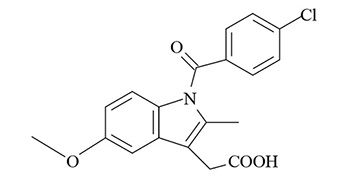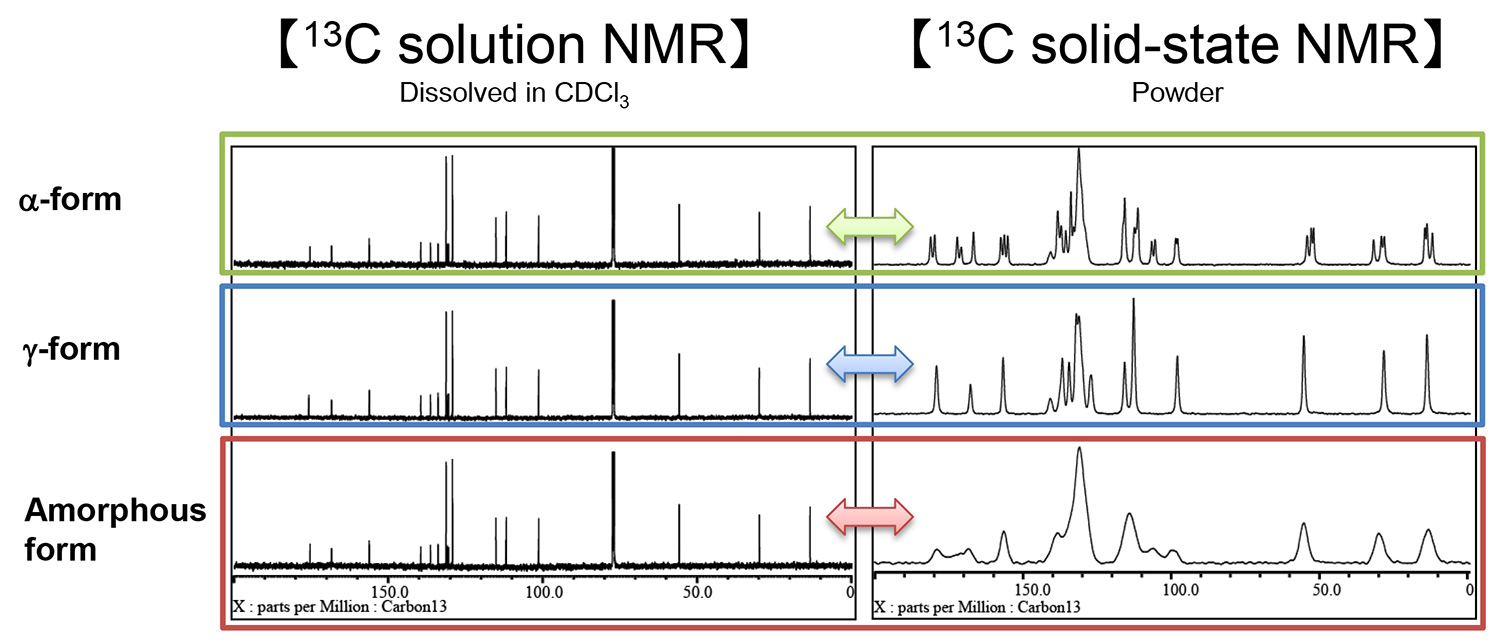Differentiation of pharmaceutical polymorphs by solid-state NMR
NM160001E
Crystal polymorphs often have different physical and chemical properties, and hence the biological activity of a drug which forms crystal polymorphs may be affected. For this reason, crystalline form control is very important in pharmaceutical and medicinal applications.
Information about the crystal structure of a drug cannot be obtained by solution-state NMR spectroscopy, because the crystal structure is invariably lost upon dissolving the material in a solvent. However, crystal forms can be readily studied and differentiated by solid-state NMR.
Indometacin, also known as indomethacin, is a non-steroidal anti-inflammatory drug used to reduce fever and pain. Indometacin forms various crystal forms, depending on the crystallization conditions. The figure below shows solution- and solid-state 13C NMR spectra of indometacin in three different forms, α-form, γ-form and amorphous form. There is obviously no difference in the solution-state spectra of the polymorphs; however, the solid-state spectra are clearly differentiated and allow each form to be identified.

Indometacin

Instrument: JNM-ECZ500R, ROYALPROBE™ and 3.2mm CPMAS probe
Sample courtesy of Prof. Kenjirou Higashi, Chiba University, Japan
- Please see the PDF file for the additional information.
Another window opens when you click. 
PDF 235.2KB
(Update: 2021/03/15)
SEARCH APPLICATIONS
Related Products
Are you a medical professional or personnel engaged in medical care?
No
Please be reminded that these pages are not intended to provide the general public with information about the products.
